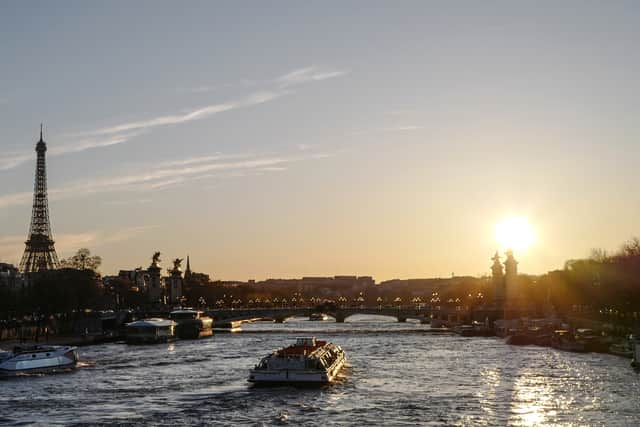Olympics 2024: Paris to bring back swimming in the River Seine for the first time in 100 years
and live on Freeview channel 276
Swimmers and divers will soon be allowed in the River Seine for the first time in 100 years.
Paris plans to make the river the centrepiece of the 2024 Olympic Games after a regeneration project - which cost €1.4bn (£1.2bn; $1.6bn) - has been universally hailed as a success.
Advertisement
Hide AdAdvertisement
Hide AdWhen the French capital first held its 1900 Olympic Games, swimming competitions took place in the river, but 23 years later that was banned due to pollution.
The project, which was started in 2018, is known as the Swimming Plan, and local authorities say residents will be able to make use of the river once again as part of the legacy of the Olympics.


Not only are three Olympic and Paralympic events - triathlon, marathon swimming and Para-triathlon - scheduled to take place in the Seine in central Paris but by 2025 three open-air swimming areas will be accessible from the quayside.
"When people see athletes swimming in the Seine with no health problems, they'll be confident themselves to start going back in the Seine," predicts Pierre Rabadan, deputy Paris mayor in charge of the Olympics. "It's our contribution to the future."
Advertisement
Hide AdAdvertisement
Hide AdPollution in the river saw the water quality decline due to upstream industrial sewage and the sanitation demands of a growing population.
The quality drastically dropped to the point that only three species if fish were recorded in the river in 1960.
One of the main problems has been the 19th-Century "single system" drainage infrastructure, which combines household wastewater from kitchens and toilets with run-off from rain on the street.
Normally, this flows through a complex of under-street tunnels to treatment centres in the outskirts. However, when there is heavy rain, the system is saturated and the excess has to be drained into the Seine.
Advertisement
Hide AdAdvertisement
Hide AdThe solution is a massive underground reservoir, which is a huge cylindrical space 34m (112ft) in depth and 50m wide. This will serve to store run-off in times of heavy rain.
The building site can be seen by Austerlitz station - and in front of the Pitié-Salpetrière Hospital where Princess Diana died after her car crash in 1997.
Over the last 20 years, improvements to water runoff, have already led to a sharp reduction in faecal bacteria entering the river- and not only fish that have come back to the Seine, some reintroduced by angling associations. It is also home to molluscs, aquatic insects, sponges and crayfish.
Mayor Anne Hidalgo has now unveiled the three spots on the Seine which will also be open for public bathing from summer 2025 - in central Paris near the Île Saint-Louis, and at the eastern and western ends of the city.
Comment Guidelines
National World encourages reader discussion on our stories. User feedback, insights and back-and-forth exchanges add a rich layer of context to reporting. Please review our Community Guidelines before commenting.
